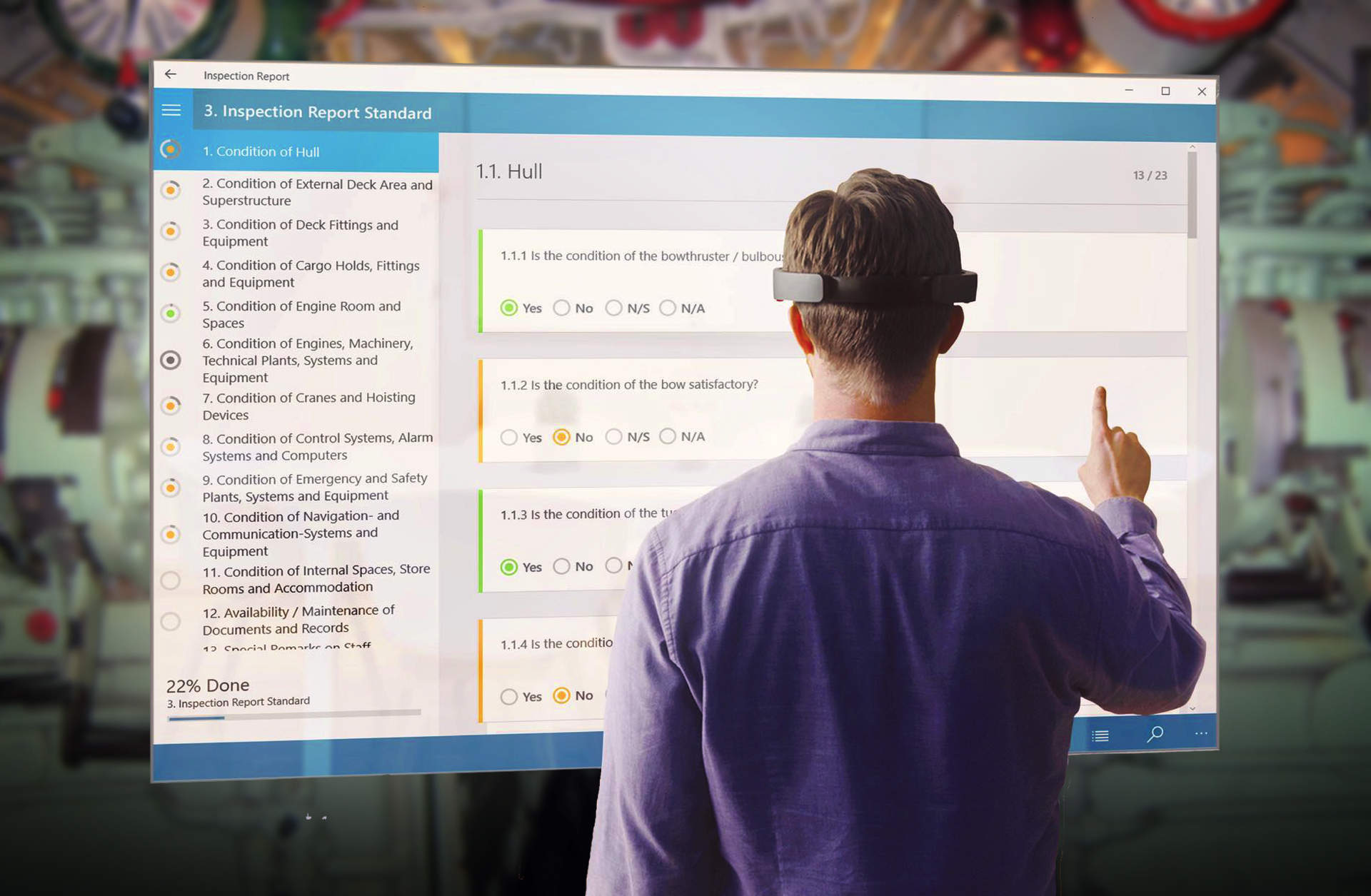
While virtual reality completely immerses people in a computer-generated world, augmented reality (AR) overlays computer-generated images on the real world.
New augmented reality software from Apple and Google is about to take the technology into the mainstream. Both have developed software to “take apps beyond the screen” and create user AR experiences for iPhones, iPads and Android phones.
Businesses have clearly had an eye on AR for a while. Almost a quarter of executives will be making significant investment in AR in the next three years, according to PwC’s 2017 Global Digital IQ survey.
PwC says the benefits to businesses include real-time delivery of relevant information to employees regardless of location, as well as the fact it will enable greater flexibility, increased operational mobility and improved efficiencies.
AR can be adapted to virtually any industry and we believe it’s going to have a revolutionary impact on the shipping industry and will be the next step on the industry’s digitalisation journey.
How can shipping companies use AR?
Augmented reality, like any other cutting-edge technology, can help shipping companies accelerate and simplify their processes. It is comparable to switching from pen and paper to a computer and will provide new tools to execute tasks faster and more intelligently.
It will also improve the performance of workers. For example, in the aviation industry it was reported that the use of an AR headset to help a GE technician wire a wind turbine’s control box improved a worker’s performance by 34% on first use.
Rather than immersing us in an alternate universe as virtual reality does, devices that use augmented reality enhance our actual surroundings by adding holograms into our field of vision to interact with. AR makes it possible to merge the real and the digital world, creating a mixed reality.
There are almost unlimited possibilities, especially as the technology progresses. For example, instead of looking at a general arrangement drawing (GA) plan on a screen, workers could look at the entire ship in 3D on a table in front of them. They could look at it from all angles, virtually highlight certain areas, or display the main engine, making the interaction feel more natural instead of looking at a screen.
Using AR devices means screens and monitors could also become obsolete, with employees able to access cloud-based data wherever they are working. Additionally, it will render a lot of hardware redundant. Just as the smartphone included the functionality of a lot of gadgets, such as a camera, telephone, calendar or calculator, AR devices go one step further.
For ship inspections, for example, inspectors will no longer need to take additional equipment with them, because the questionnaire could be displayed directly in the room and pictures could be taken with the camera within the device.
There are also communication benefits. The industry is already working on projects that make it possible to have virtual meetings. Holoportation is a new type of 3D capture technology that allows high-quality 3D models of people to be reconstructed, compressed and transmitted anywhere in the world in real time.
When combined with mixed reality displays such as HoloLens, this technology allows users to see, hear and interact with remote participants in 3D, as if they are in the room. Communicating and interacting with remote users will become as natural as face-to-face communication.
The future of AR in shipping
We expect initially it will be management teams that will benefit most from AR technology because of the many possibilities it offers to display all kinds of operational and productivity data, such as the movement of fleets.
Engineers will also benefit from being able to highlight certain engine areas for maintenance purposes. AR will allow them to see an entire ship in 3D and examine specific parts of the vessel without even being on board.
The further the technology advances, the more areas of application will be found.
There are likely to be some concerns at first, especially around how complicated the technology is to use, and whether staff will require extensive training to use it. We believe these can be easily overcome.
Younger generations tend to be more digitally savvy, so are unlikely to have any difficulties getting started. Other users might need an introduction to get used to the headset.
Apart from the headset, the technology relies on software – so it’s simply a question of understanding how it works and getting used to wearing it.
We have been working with Microsoft HoloLens to make this a reality for the shipping industry. The HoloLens device is the first self-contained, holographic computer that allows the user to project and interact with holograms.
Research from analyst firm CCS Insight predicted that mixed reality devices like Microsoft’s HoloLens will start gaining sales from 2019, and that 2018 will mark the start of growth in adoption of AR devices.
Whilst it’s still early days for the shipping industry, those with an interest in future technologies should keep a close eye on AR, as we anticipate within the next five years it will be transforming how companies operate.



